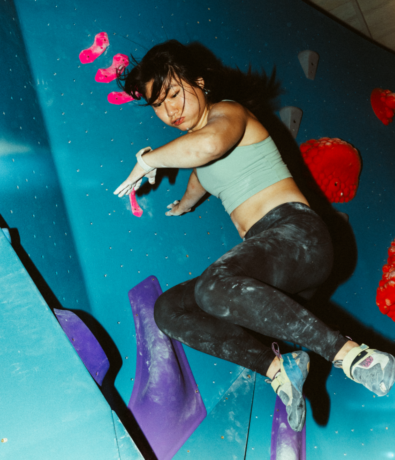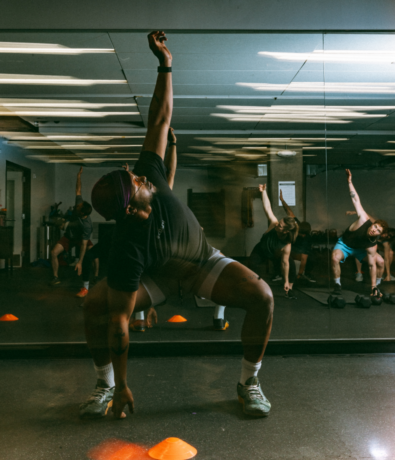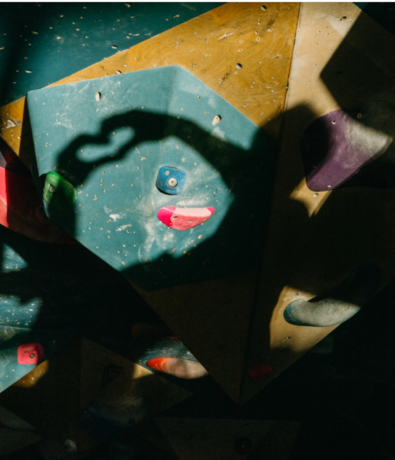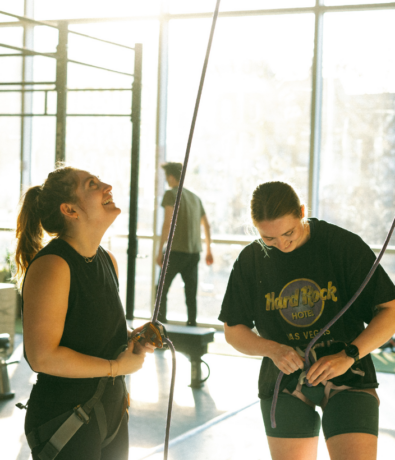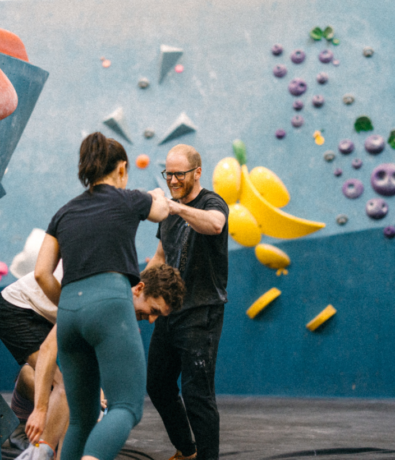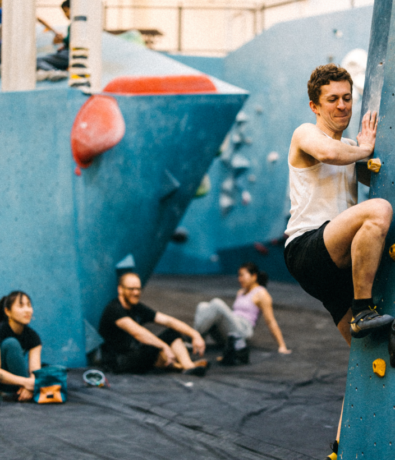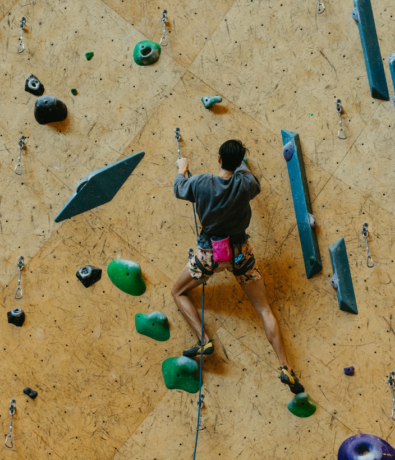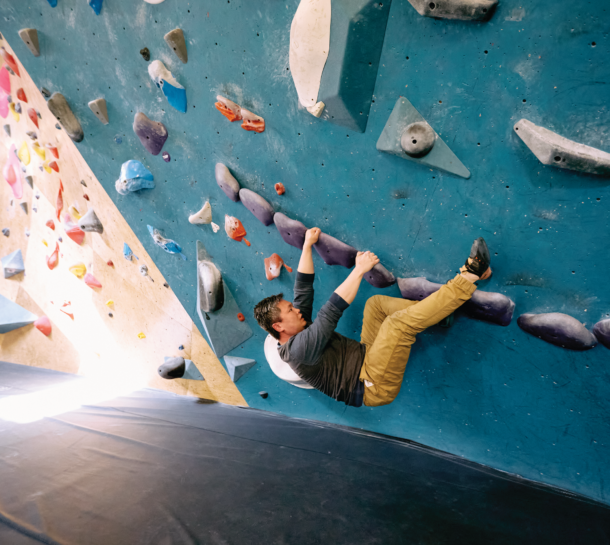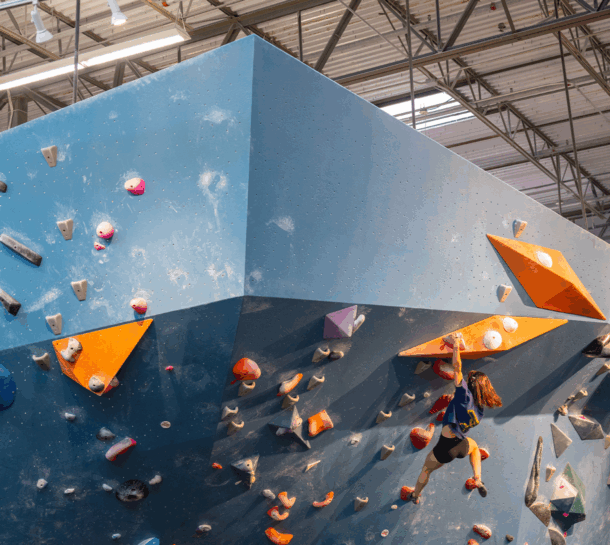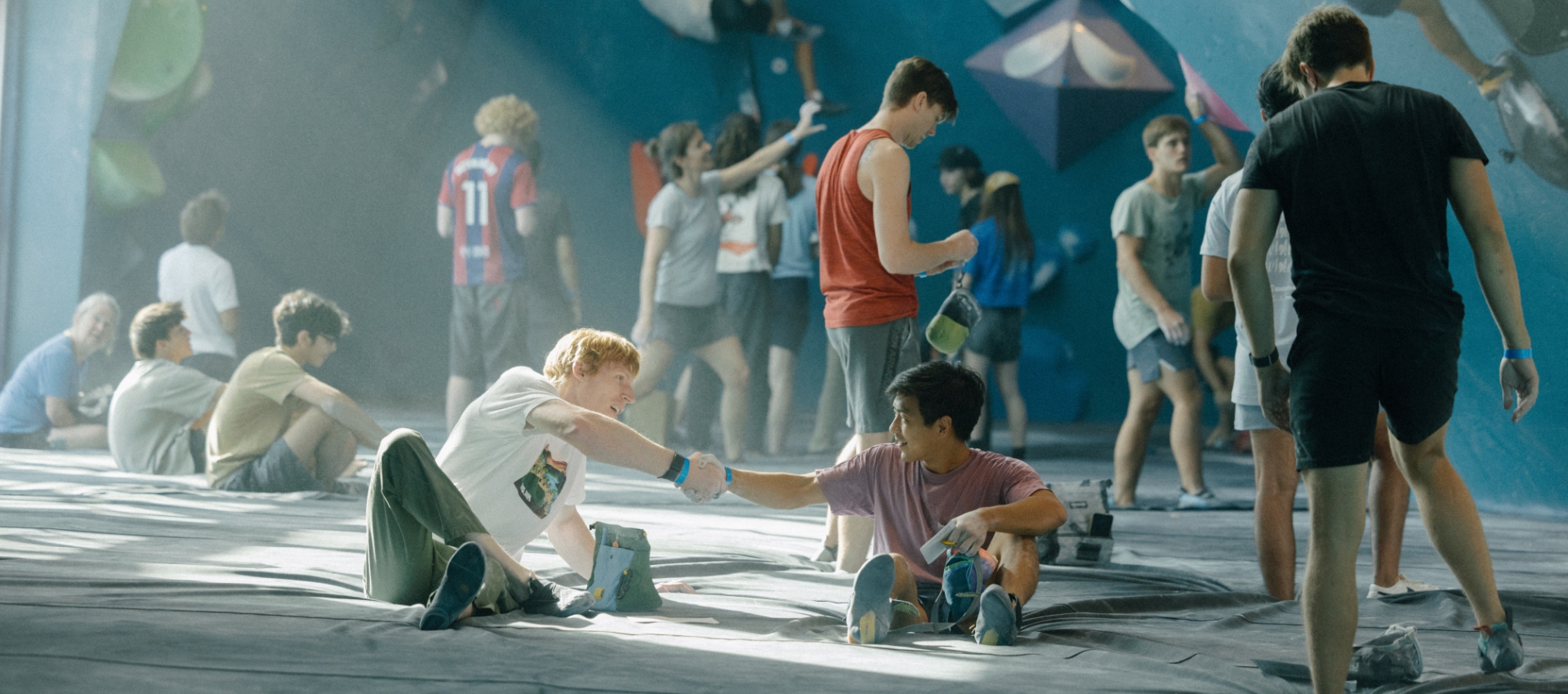
Let's get
Started
We cause problems...the good kind.
The Climbing ExperienceFlexible access to all of our walls

Monthly
Get access to our world class bouldering walls, yoga and fitness classes, and more.
View MoreShoulder to Shoulder
Our Classes
Have a question?
Here’s what you need to know before you go. Don’t see what you need? Contact us and we’ll be happy to answer any other questions.
LEARN MORE-
What to wear/bring?
Bouldering
If you intend to boulder, the only requirement is a pair of climbing shoes, though many climbers also like to use chalk to improve their grip. Shoes and chalk are available for rental or purchase at all Hive locations.
Route Climbing
If you intend to route climb, you will need (at minimum) a climbing harness for safety and a pair of climbing shoes. Those climbing with a partner will also need a belay device. Ropes are provided and maintained by the gym.
If you do not own a climbing harness, belay device, or climbing shoes, these items are available for rental or purchase at The Heights.
-
What not to wear/bring?
For safety reasons, some items should be removed from your person and stored while climbing or left at home:
- Rings or dangling jewelry
- Keys or other pointy objects
- hard/bulky objects (like water bottles) should be left off the climbing mats
- Don’t keep anything in your pockets while climbing (things falling from height could injure a person below you)
-
How do I learn to climb?
1. Take a course
The most efficient way to learn the basics of climbing is from a pro! We offer courses so you can learn skills for efficient movement, and safety. Book with a friend, or book solo and make new friends! Courses include a gym membership in the price, so you can practice what you’ve learned while it’s fresh. See courses page.
2. Learn movement technique from other climbers in the gym
So, you have a friend who’s willing to teach you their moves, awesome! You can also learn a lot by respectfully observing the movement and techniques of other climbers. It’s common to ask those who are resting after their climb how they did a particular move, and it’s a good way to meet new climbing buddies too. Please be respectful if someone isn’t interested in a conversation when you approach them.3. Check out KAYA climbing app
This app acts as a virtual guide book and lots of climbers share videos and notes on climbs they’ve completed which might help you solve the next problem on your tick list.
4. Check out online resources
There are a ton of climbers on YouTube, Instagram and TikTok who have a ton of tips. A quick web search will turn up a wide variety of folks, so we recommend looking for someone with plenty of experience and who is a similar height or build as you, since these factors can impact the way someone moves to reach the next hold.
-
Is there a glossary somewhere for climbing lingo?
Bouldering: The term bouldering refers to climbing without the use of a rope, to a limited height (usually no more than 5.5 meters). This can be done indoors and outdoors and is popular for its communal nature, low skill-barrier to entry, and technical or powerful movement. Originally developed to train for the more difficult sections of longer climbs, known as routes.
Route/Rope Climbing: For larger vertical distances, we use the term ‘route climbing’ or rope(d) climbing as most people want a rope-related system to prevent injury (or worse) in case of a fall from high up on the wall. Most indoor routes are 10.5m or taller. An outdoor route is usually between 30-35m because standard manageable rope lengths are 60-70 metres.
(Boulder) Problem: A pre-determined boulder climbing pathway; in gyms these are set by a route setter.
Beta: The particular movement or method to get from point a to point b on a problem or route.
Hold(s): The sculpted grips placed strategically on the wall by routesetters which give the climber points of leverage on which to pull/push off from as they ascend.
Volumes: Large forms attached to the wall in order to vary the wall angle as part of a climbing route or boulder.
Slab: A slab is a low-angle wall or face, usually requiring balance and precise footwork rather than upper-body strength to climb. In other words, you lean over the wall (slab) instead of the wall leaning over you (overhanging).
Crux: The most challenging part of a climb.
Flash: To complete a climb on your first attempt.
Send: From the term ascend, this means to reach the top, to complete your climb
-
If I get a day pass, can I leave and come back?
A day pass is a day pass! Come and go as you please (just let us know if you duck out).
Note that it only grants you access to the venue of purchase so you won’t be able to climb at Derwent Park and Hobart on the same entry.
-
Do you offer kids classes?
There’s a class for everyone, from ages 6 and from beginner sessions to elite training teams!
Check out our programs here.

